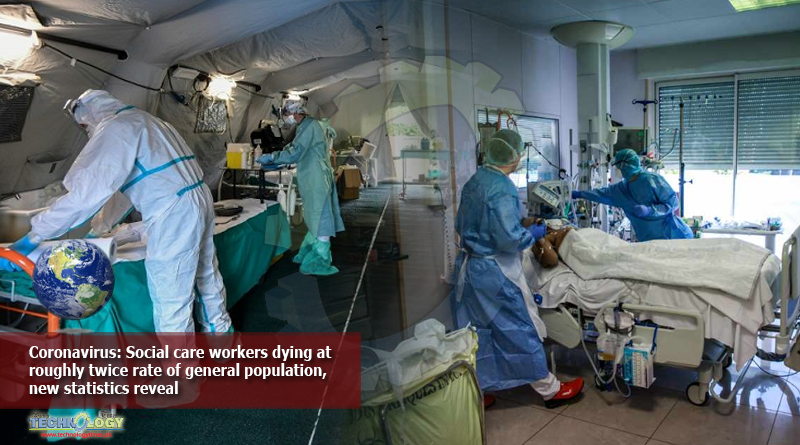Office for National Statistics study finds healthcare staff including social care workers, nurses and doctors at no greater risk of dying from Covid-19 than the general population

Social Care workers are dying from coronavirus at around twice the rate of the general population, according to a new analysis by the Office for National Statistics (ONS).
Data published today also showed healthcare workers, including doctors and nurses, did not have higher rates of death involving Covid-19 when compared with the rate people with the same age and sex in the general population.
According to the ONS, men working as security guards had one of the highest risks at more than four times the risk of men in the general population.
The ONS has analysed the risk of Covid-19 deaths for specific occupations as part of efforts to understand how the disease is spreading through the UK and who is at increased risk.
It said there were a total of 2,494 deaths involving coronavirus in the working age population aged between 20 and 64 in England and Wales, registered to 20 April 2020.
Nearly two-thirds of these deaths were among men, with the rate of death statistically higher in males, with 9.9 deaths per 100,000 compared with 5.2 deaths per 100,000 women.
Care workers and home carers both had significantly raised rates of death involving with rates of 23.4 deaths per 100,000 males (45 deaths) and 9.6 deaths per 100,000 females (86 deaths).
The ONS said that when compared with rates among people of the same age and sex, men working in the lowest skilled occupations had the highest rate of death involving Covid-19, with 21.4 deaths per 100,000 males (225 deaths); men working as security guards had a rate of 45.7 deaths per 100,000 (63 deaths).
Among other high risk roles for men include taxi drivers and chauffeurs (36.4 deaths per 100,000); bus and coach drivers (26.4 deaths per 100,000); chefs (35.9 deaths per 100,000); and sales and retail assistants (19.8 deaths per 100,000).
Ben Humberstone, deputy director of health analysis and life events said: “Due to the nature of these roles requiring close contact with people, employees in these occupations may be more likely to come into contact with someone who has COVID-19.
“While we can say with confidence that there are higher rates of death from COVID-19 among these occupational groups even taking into account age and sex, there may be other factors such as ethnicity and where people live that will help explain these findings.”
On healthcare staff he said: “Despite being exposed to disease on a daily basis, and requiring close contact with others, healthcare workers, such as doctors and nurses, did not have higher rates of Covid-19 deaths compared with the rate among those of the same age and sex in the population as a whole.
“This could be because during the pandemic they are more likely to be using personal protective equipment (PPE), or have a greater knowledge of how diseases spread and are thus more likely to follow hygiene measures such as hand washing.
The ONS also looked at risk of exposure to Covid-19 and found three quarters of workers in jobs that required frequent contact with people, and therefore a higher risk, were women.
Workers aged 55 and over were also over-represented in roles such as ambulance staff (excluding paramedics) houseparents and residential wardens.
Workers from black and minority ethnic groups make up just over a quarter of those who are dental practitioners, medical practitioners, and ophthalmic opticians.
Six out of 16 of the jobs with very high potential exposure risks jave a median pay of less than the UK average of £13.21 an hour.
Care escorts, dental nurses, and nursing auxiliaries and assistants have the lowest medians, ranging from £9.45 to £10.93 an hour
Originally published at the Independent
